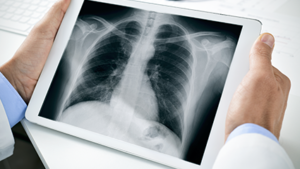The world has come to a halt over the last few months. In order to contain coronavirus and keep its spread under control, almost all the industries, offices, markets, and establishments across the globe have gone under complete lockdown. But since it is not possible to keep the world economy closed until a potential vaccine for coronavirus arrives, authorities are realizing that it is important to learn living with the virus.
With that in mind, the American College of Radiology has recently issued a 7-step plan to help imaging practices resume their normal operations across the US. Getting back to normal back is not so easy after so many weeks of lockdown, but these steps recommended by ACR can be of great help for resumption.

The Seven Steps of the Resumption Plan
Following are the seven steps recommended for the safe resumption of non-urgent radiology practices during the COVID-19 pandemic:
1. Safety measures should be taken during the radiology scans of all patients. Every patient entering the facility should be screened for symptoms of COVID-19 infection like cough and fever, sufficient PPE (Personal Protective Equipment) should be used by all the staff members, and the flow of patients should be properly streamlined to avoid any unnecessary contact.
2. The radiology scanning facility should be operated while monitoring the local statistics of the pandemic, and should strictly follow regulations recommended by their greater institution and their government. Any time-sensitive care should be postponed for at least 2 weeks after the peak of the outbreak in their local area. Regular monitoring of the data should be done to follow the needed procedures.
3. Decisions should be made after engaging the risk-benefit strategy. Clinical perception and risk factors should be considered, only after consultation from stakeholders and referring providers. Based on these factors, the decision should be made as to whether to go for a low-risk diagnostic procedure or not.
4. A categorized plan should be developed for resuming non-urgent diagnostic care to patients. Four categories should be made to place patients into them as per their need for treatment. These four categories should be emergency or urgent case, non-urgent or time-sensitive case, elective or screening test, and imaging trials for research subjects. Patients should be prioritized based on their diagnostic needs, and urgent cases should receive screening first.
5. Accreditation and postponement of the cases should be managed as per regulations to avoid any unplanned delays.
6. Since postponed and delayed cases may create a huge backlog for the radiologists, steps should be taken to address such issues as well. For example, working hours should be extended, imaging protocols should be shortened, and scheduling grids should be changed to maintain social distancing at the facility.
7. Under such circumstances, it is normal for patients and healthcare workers to feel panicked. To avoid such a panic situation, they should be provided fact-based updates and information on a regular basis. Radiology facilities should keep advertising about the steps they are taking to keep the infection under control. They must also acknowledge that getting stressed and anxious is normal at such times.
Formation of the Resumption Plan
A number of doctors and practitioners from different parts of the US used their knowledge and experience to develop this 7-step resumption plan. This document represents the official status of the American College of Radiology. However, circumstances may differ from one locality to the other, based on which the strategy should be changed accordingly. Since living with coronavirus is becoming the ‘new normal’ in this age, the radiology facilities and healthcare workers are expected to weigh the benefits of resuming care without putting anything at stake.
The radiology care should be delayed as far as the risk of acquiring COVID-19 infection at the radiology facility is greater than the risk of death or illness due to postponed radiology screening. However, if the risk of illness or death is high due to delayed screening, then the patient and the healthcare workers can take the risk of acquiring infection at the facility.
This kind of risk-benefit strategy is quite difficult due to several complex factors involved in it, as practice leaders have to measure the risk and decide whether they should go for delayed screening or take risk of acquiring COVID-19 infection. Finally, no single approach is possible for the safe resumption of non-urgent care in the radiology facilities. ACR recommends radiology workers to work in tandem with referring providers, hospital systems and the patients for safe and effective patient care.
We, at sepStream®, are experts at offering all types of medical tools and equipment. If you are planning to resume your radiology practices, then we can give you complete guidance, and also deliver you the best quality PPE, tools and machines to create a safe and hygienic environment in your facility. So, get in touch with us and let us know your concerns.